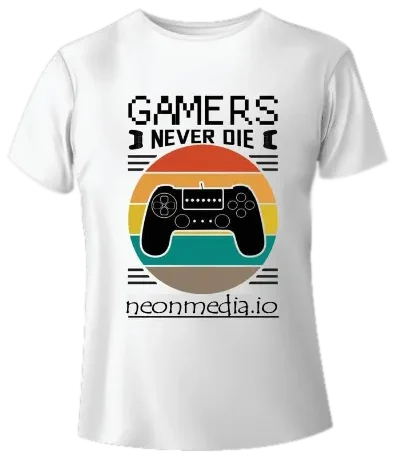Innovative Approaches in Virtual Production
Transmedia Storytelling Techniques and Innovative Approaches: Mapping New Territories for Games and Media
Transmedia storytelling is revolutionizing the way we consume media. By weaving narratives across multiple platforms, creators can engage audiences on a deeper level. Imagine following a storyline that begins in a video game, continues in a novel, and culminates in a feature film. This approach not only captivates audiences but also expands the universe in which the story exists, offering richer and more diverse experiences.

Transmedia storytelling isn’t just about spreading a story across different media; it’s about creating a cohesive and immersive narrative. For instance, in “The Matrix” franchise, the story unfolds in movies, animated shorts, and video games. Each medium provides a unique perspective and adds layers to the overarching narrative, making the entire experience more engaging and interactive.
Innovative Approaches to Transmedia Storytelling
Innovative approaches in transmedia storytelling are pushing boundaries. One such approach is the use of augmented reality (AR) and virtual reality (VR) to create immersive experiences. These technologies allow audiences to interact with the story in a more personal and engaging way. For example, the “Pokémon Go” phenomenon showed how AR could blend the real world with the fictional, providing a new way to experience storytelling.
The Intersection of Games and Other Media
Games are at the forefront of transmedia storytelling. They offer an interactive platform that can seamlessly integrate with other media forms. For example, the “Witcher” series started as a book, became a highly successful video game franchise, and then was adapted into a popular TV series on Netflix. Each medium offers a different way to experience the rich world and complex characters created by Andrzej Sapkowski.
Emmy Award Winning Team Advances the State of the Art in Virtual Production

Virtual production is another groundbreaking area where innovative storytelling techniques are being developed. Emmy Award-winning teams are pioneering this field, blending traditional filmmaking with cutting-edge technology to create stunning visual experiences. Virtual production involves the use of digital environments and real-time rendering to produce scenes that are both realistic and fantastical.
The Role of Real-Time Rendering
Real-time rendering is a game-changer in virtual production. It allows filmmakers to see the final image during the shoot, enabling more creative decisions on the spot. This technology was famously used in the production of “The Mandalorian,” where entire environments were created digitally and projected onto LED screens, providing a seamless blend of physical and virtual sets.
The Impact on Traditional Filmmaking
The impact of virtual production on traditional filmmaking cannot be overstated. It allows for greater flexibility and creativity, reducing the need for physical sets and enabling filmmakers to create more complex and imaginative scenes. This technology is also cost-effective, saving time and resources by minimizing the need for reshoots and post-production work.
HBO Spins Out Neon Media Narrative-Driven Interactive Media Startup
HBO’s decision to spin out Neon Media as a narrative-driven interactive media startup is a testament to the growing importance of interactive storytelling. Neon Media is set to redefine how stories are told, blending traditional narrative techniques with interactive elements to create engaging and immersive experiences.
The Vision Behind Neon Media
The vision behind Neon Media is to create stories that are not just consumed but experienced. By integrating interactive elements, Neon Media aims to engage audiences in a more meaningful way. This approach allows for greater audience involvement, making them an active participant in the story rather than a passive observer.
The Future of Interactive Media
The future of interactive media is bright, with companies like Neon Media leading the way. As technology continues to evolve, we can expect to see even more innovative storytelling techniques that blur the lines between different media forms. Interactive media has the potential to transform the entertainment industry, offering new ways for audiences to engage with stories.
Why the Television Writers’ Room Has Come to Game Development
The incorporation of television writers’ rooms into game development is a trend that is reshaping the industry. This approach brings a new level of narrative depth and complexity to games, making them more engaging and immersive.
The Role of Television Writers in Game Development
Television writers bring a unique skill set to game development. Their expertise in character development, dialogue, and story arcs helps create richer and more compelling narratives. This collaboration between writers and game developers results in games that are not only fun to play but also offer a deep and engaging story.
Case Studies of Successful Collaborations
Several successful collaborations between television writers and game developers highlight the potential of this approach. For example, the “Telltale Games” series, based on popular TV shows like “The Walking Dead,” has been praised for its strong narrative and character development. These games offer an immersive experience that rivals traditional TV storytelling.
Media Technology Holding Company Acquires Majority Stake in Emmy Award-Winning Startup
The acquisition of an Emmy Award-winning startup by a media technology holding company is a significant development in the industry. This move highlights the growing importance of technology in media production and the potential for innovative storytelling techniques.
The Strategic Importance of the Acquisition
The acquisition is strategically important as it combines the creative expertise of the startup with the technological capabilities of the holding company. This synergy can lead to the development of new and innovative media products that push the boundaries of traditional storytelling.
The Future of Media Technology
The future of media technology is exciting, with endless possibilities for innovation. This acquisition is just one example of how companies are positioning themselves to take advantage of new technologies and create more engaging and immersive experiences for audiences.
